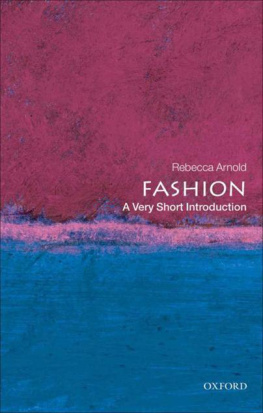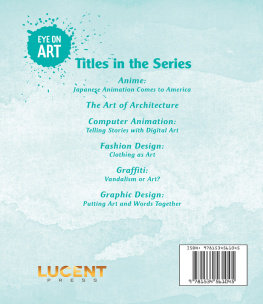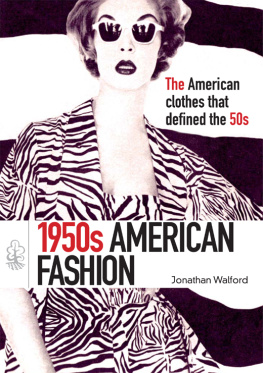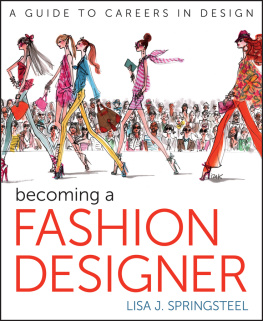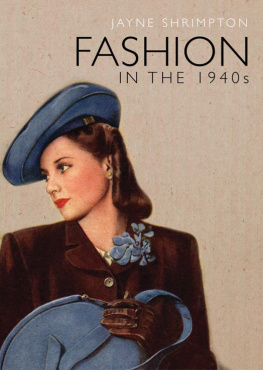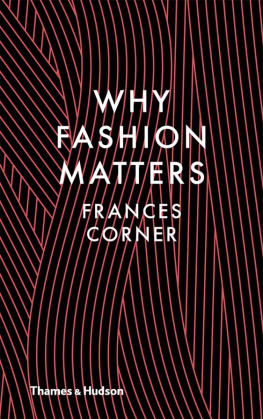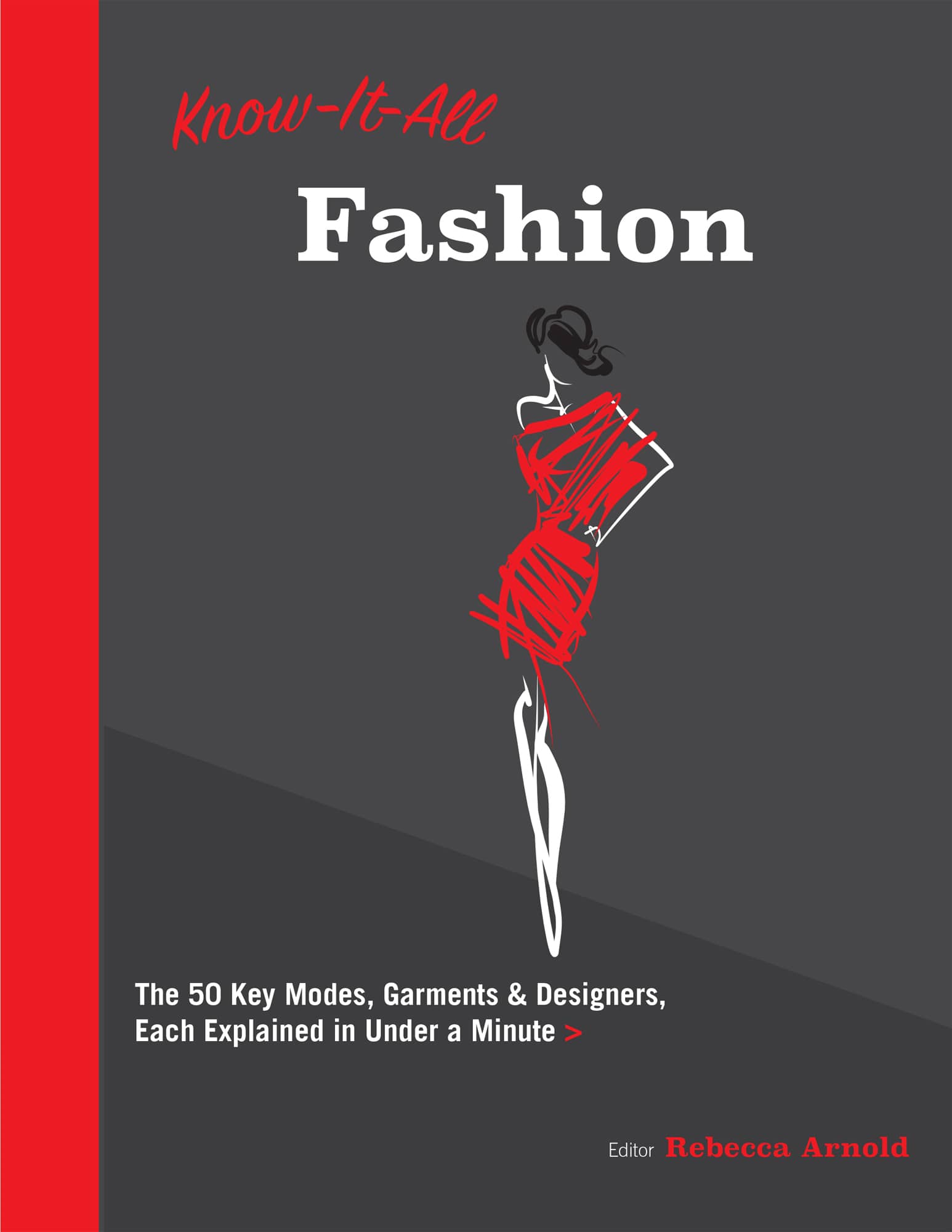Know-It-All
FASHION
The 50 Key Modes, Garments & Designers, Each Explained in Under a Minute >
Editor Rebecca Arnold
Contributors
Emma McClendon
Katerina Pantelides
Julia Rea
Rebecca Straub
Alison Toplis
Olga Vainshtein


2017 Quarto Publishing plc
This edition published in 2018 by Wellfleet Press,
an imprint of The Quarto Group, 142 West 36th Street,
4th Floor, New York, New York 10018, USA
T (212) 779-4972 F (212) 779-6058
www.QuartoKnows.com
Published in the UK in 2016 as 30-Second Fashion
All rights reserved. No part of this book may be reproduced in any form without written permission of the copyright owners. All images in this book have been reproduced with the knowledge and prior consent of the artists concerned, and no responsibility is accepted by producer, publisher, or printer for any infringement of copyright or otherwise, arising from the contents of this publication. Every effort has been made to ensure that credits accurately comply with information supplied. We apologize for any inaccuracies that may have occurred and will resolve inaccurate or missing information in a subsequent reprinting of the book.
Titles are also available at discount for retail, wholesale, promotional, and bulk purchase. For details, contact the Special Sales Manager by email at or by mail at The Quarto Group, Attn: Special Sales Manager, 401 Second Avenue North, Suite 310, Minneapolis, MN 55401, USA.
Digital edition: 978-0-76036-120-7
Softcover edition: 978-1-57715-174-6
This book was conceived, designed, and produced by
Ivy Press
An imprint of The Quarto Group
The Old Brewery, 6 Blundell Street, London N7 9BH, UK
T (0)20 7700 6700 F (0)20 7700 8066
Publisher Susan Kelly
Creative Director Michael Whitehead
Editorial Director Tom Kitch
Art Director Wayne Blades
Commissioning Editor Sophie Collins
Senior Project Editor Caroline Earle
Designer Ginny Zeal
Illustrator Nicky Ackland-Snow
Picture Researcher Katie Greenwood
Glossaries Text Alison Toplis
INTRODUCTION
Rebecca Arnold
What makes fashion, rather than just clothes? Is it the way a garment is designed? Or the way its sold? Or maybe its the way its worn? All of these aspects play a part, but the main thing defining fashion is its time-based nature. Built around seasonal shows, the word fashion implies a relationship to change and movement. Fashion shapes the type of clothes, accessories, grooming, and even the ways we style ourselves. After all, fashions second meaning is to shape, to mold, to create something. We fashion ourselves, and in turn, fashion makes us.
How This Book Works
We begin by looking at some of the iconic Designers whose work has defined the silhouette through the decades, from industry pioneers such as Paul Poiret, Madeleine Vionnet, and Coco Chanel to modern-day trendsetters including Alexander McQueen, Vivienne Westwood, and Marc Jacobs. We then look at the Themes & Inspirations behind fashion designers work, such as the choice of textiles and the influence of movies, sport, and social trends.
But how is fashion created? And where do we find out about it? In Fashion Cities & Centers, we look at fashion as an international industry. Although the main designers collections are shown twice a year in the four most established citiesParis, London, New York, and Milanthe past twenty years have seen the growth of new locations and fashion centers, for example, Tokyo, So Paulo, and Sydney. As countries such as India and China emerge as sites of both fashion design and media, rather than just production, the industrys global outlook has become ever more important. Fashion cities and countries have also become associated with particular styles; for example, London is often seen as the home of edgy fashions. The Fashion Calendar then looks in detail at how the industry is organized around annual fashion weeks in these cities and the roles of the various people who arrange and sell the fashion.
From court designers of the eighteenth century to the present day, the fashion silhouette has evolved to reflect the influences of the times.
From Couture to Main Street examines how designers and manufacturers, including Alexander Wang and Prada, produce fashion for different levels of the marketfrom different types of clothing, such as evening wear or sportswear, to different types of wearers, including businesswomen and teenagers. In each case, specific designers and brands create clothes allied to their own outlook, and in connection with their client base.
Designers and brands then rely on a whole chain of different professionals to enable them to promote and sell their work. The Media, from magazines such as Vogue, to blogs including Susanna Laus Style Bubble, play a key role in disseminating not only images of new collections and reviews of fashion shows, but also creating a mood and emotional resonance that connects fashion to consumers on a deeper level.
In the late nineteenth and early twentieth centuries, as the fashion industry became increasingly professionalized, new subsidiary industries evolved to support its growthfrom advertising to public relations. In the century and a half since then, wider changes such as the emergence of international travel and digital media have spread fashions farther afield, and given more democratic access to fashionable dress.
It is important to remember that it is not only the fashion industry that generates new stylesStreet Style, the subject of the final chapter, has played a significant role, especially in the way younger people dress. From punk to Japanese Lolitas, it demonstrates the importance of self-fashioning, as well as keeping up with the latest fashions seen on the runway and the red carpet.
Throughout this book youll find profiles of some of the key names from the fashion industry, including Miuccia Prada, Anna Wintour, Paul Smith, and Bill Cunningham. Each section is broken down into three partsthe 3-second sketch encapsulates the subject, the main entry delivers the in-depth treatment, and the 3-minute detailing provides more information about the topic at a glance.


